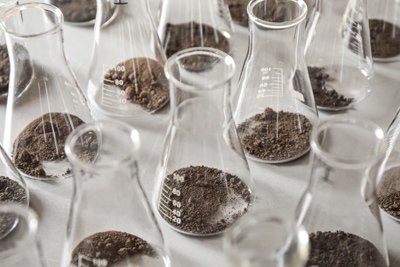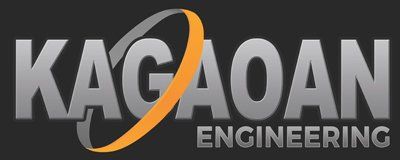Laboratory Testing for Engineering Properties
Lab Testing Engineering Properties - NYC, Manhattan, The Boroughs, Nassau County, Suffolk County, Long Island, and New Jersey - Kagaoan Engineering

Determination of Engineering Properties
Construction projects in NYC and the surrounding areas are extensive projects requiring special testing and data interpretation techniques. We are proud to honor the technical commitments that come with shear tests, deformation monitoring, and water measuring to develop existing or new properties. With a diverse group of engineering, structural, architectural, and mathematical professionals, our team at Kagaoan Engineering provides project testing, oversight, monitoring, design, and management services for NY, NJ, and CT builders.
Contact us
for free consultation.
The Importance of Engineering Properties Lab Testing
Soil, water, and existing structure tests are vital to any construction project. Most places use specific standards to ensure worker safety and protection for users of the final product. NYC building code requires these standards and more for construction projects. A technical specialist with the proper equipment and interpretational skills must be a part of project development.
Geotechnical engineers are responsible for many things, like the accuracy of the samples they collect. They must also maintain a specific standard of equipment. For example, engineers must regularly calibrate sensitive tools to ensure exact measurements for any project proposal. In addition, tracking accurate sample sizes and recording the data means strict attention to detail and following processes.
Laboratory testing for engineering properties is a highly technical field that requires excellent math and computational skills and computer proficiency. At Kagaoan Engineering, our company uses top-of-the-line technologies and programs. In addition, our engineering team stays current on code changes and new methods for testing and data modeling to ensure we provide our clients with the best solutions for any project.
To set up an estimate, please contact one of our team members at Kagaoan Engineering at 516-208-1533.
Types of Soil Tests Engineers Perform
Moisture Percentage
- This classification is the amount of water present in a soil sample. If there is only air in the dirt, then the moisture content number will be equal to zero, giving the sample classification of dry. Technicians use an oven, a scale that calculates measurements to the tenth of a percent or more, and a collection container that will not rust for the test.
Soil Density to Void
- This test detects how much air is in the soil. First, the engineer calculates the density of the soil by using how much the sample weighs and the volume of the dirt. Then, using ratios, they can determine the void in the sample with these two numbers.
Soil Compressibility
- It takes three inputs to figure compressibility. The dry soil weight, the void size, and the load the soil will experience are necessary to calculate this data. The answers allow engineering teams to figure out if there is a need to decrease the weight on the soil, add a strengthening product, or increase water to raise the soil compression level. Calculating these numbers is critical for dams, new construction, bridge embankments, and other construction works.
Other classification tests
- Atterberg limits
- Soil size
- Specific gravity
- Shear testing
- Oedometer test
- Other permeability tests
Structural Integrity Tests on Rocks
Unconfined Compression Test
- This rock test requires pressure on a sample without compression in the opposite direction. Engineers collect samples by drilling and collecting a rock sample equivalent to at least ten times the size of the samples in the granule tests. They give careful attention to keeping the sample intact by ensuring strict flatness and cylindrical size before the compression test.
Classification of Porosity
- This determination lets the team know how much water can seep into the pores of a rock bed. To calculate this figure, the geotechnical engineer uses the volume of the pores compared to the volume of the rock sample. Many things affect porosity, including whether the holes have connections, how large they are, how far apart the pores are, and compaction material within the openings.
Three-dimensional Force Test
- This test is similar to the uniaxial compression test, except it applies force in three directions to see how the rock responds. Samples are on a timetable for testing to ensure they are consistent with the conditions at collection time. To get precise results, engineers must keep the sample size within a specific range and tolerance level.
Tensile Testing by Splitting
- The tensile test comes from two types of testing. The Brazilian test and a direct tensile test give engineers the calculations that tell them what forces cause the rock to fail along the diameter of the sample. During the test, even pressure on the rock pushes on the sample constantly until it falls between 15 and 30 seconds.
Ultrasonic Velocity
- This testing method helps specialists determine what vibrations and amplifications the rock can withstand. Engineers use this figure to determine whether a sample can handle the forces from factory use, traffic, and consistent weather conditions like wind. The length of the wave in the ultrasound test dictates whether the sample will destruct under a set load.
Rock Resistance Testing
- Technicians may use slake testing to refer to this method of rock sampling. This method helps determine how much a material will erode or break down from weathering. Samples undergo wetting and drying techniques to determine how strong the material is and whether it can hold up for the project.
Interested parties may contact Kagaoan Engineering for more information about laboratory testing for engineering properties. Our team uses advanced equipment and precise measurements to give your company peace of mind for any project. In addition, our extensive experience in the NYC area allows us to help with construction from planning to completion.
Call 516-208-1533 for questions and estimates.
About Kagaoan Engineering
Every member of Kagaoan Engineering is an experienced professional who brings distinct strengths and specialities to the company. We work together as team to ensure that your project has the skill sets required to succeed.
Copyright 2017 The Kagaoan Engineering. All Right Reserved. Art Commercially Licensed by Shutterstock.

